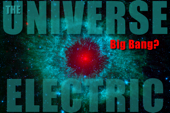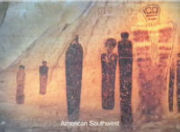Asteroid or Comet - Same Bloke, Different Haircut!
07/25/08
[Editor's note: More and more lately the Whipple "dirty
snowball" model of comets has been brought into question by the
many recent data acquisitions from several comets. In the article below
Plasma Physicist Dr. C. J. Ransom expands on a recently published
article from Dr. Donald Brownlee by adding some of the published
material from Nobel Laureate Hannes Alfvén and other sources with some
interesting results. Seems the "dirty snowball" model should
have melted long ago... ]
Donald Brownlee is a professor of astronomy at the University of Washington
in Seattle. The International Mineralogical Association named the first new
mineral to be discovered in a particle from a comet in honor of Dr. Brownlee,
who revolutionized research on interplanetary dust entering Earth's atmosphere.
Brownlee wrote an excellent review of information about comets. The article
was in Physics Today for June 2008. The information included
properties of comets and theories about potential origins of comets.
The major theme of the article concerned what could be learned about the
early solar system from the properties of comets and meteorites. This fits
with plasma cosmologist Hannes Alfvén's comment at his Nobel Lecture,
"We can state as a general rule that the smaller the body the further
will the study of it bring us back in time. " [Hannes Alfvén,
Plasma physics, space research and the origin of the solar system, Nobel
Lecture, December 11, 1970, p314]. Although not specifically addressed by
Brownlee, the suggestion about possible plasma properties of comets was
supported by some of the data Brownlee presented.
Brownlee wrote, "The Sun, planets, and smaller bodies of the solar
system all formed from a short-lived disk of material that for centuries
has been called the solar nebula. " Contrast that with another of
Alfvén's comments: "In the past too much attention has been
concentrated on the formation of planets around the sun. One of the
unfortunate results of this is that many theories of the origin of the solar
system have been based on theories of the early history of the sun. This is
a very shaky basis because the formation of the sun (and other stars) is a
highly controversial subject. " [op. cit. p310] This
comment was based on the plasma cosmology concept that some stars may have
resulted by ejection of material from galactic plasma. However, both
Brownlee and Alfvén agree that the smaller bodies are more likely to
provide information about a more remote past, which is the main thesis of
Brownlee's article. He noted, "Both asteroids and comets are vital
sources of information about the early history of the solar system. "
Both Alfvén and Brownlee agree that "The material in comets hasn't
changed much over the past few billion years." However, the theory about
the composition of comets has.
Brownlee did not detail the recently popular 'dirty snowball' model, which
is reasonable since it has been shown not to fit the latest observations.
In 1950, an American astronomer, Fred L. Whipple, postulated the so-called
dirty snowball model. In that model the nucleus of a comet was considered
to be a lumpy piece of icy conglomerate. The comet contained dust which was
cemented by a large amount of ices such as water ice and ices of more
volatile molecules. It was thought that the only time the comet produced a
tail was when the comet was close enough to the sun that the ices and dust
"sublimed" and created the tail. The proponents of the plasma model
of comet activity did not agree with the dirty snowball model even when it
was the most popular.
Brownlee did state, "Comets are distinguished and defined by their
cometary activity, the ejection of detectable amounts of dust and gas.
" This is still correct. What does not fit the dirty snowball concept
is what is the cause or causes of the ejection, exactly what is ejected and,
hence, what is the composition of the comet body.
About the early history of the Solar System, Brownlee wrote, "If
astronomers had been available to observe asteroids during that time they
would have seen tails and comae, and they would have identified the asteroids
as active comets. " That is because some currently believe that comets
are asteroids that still have considerable volatile materials. Some plasma
scientists, however, consider comets and asteroids to be essentially the same
except for the orbits.
In the plasma concept, the orbit of an asteroid in a cometary orbit takes it
through a wider variation of electric fields. The body can become charged. As
the body enters an area where there is a large potential difference between
the body and the surrounding environment, the body produces an electrical
discharge. This accounts for a plasma tail of comets. It also accounts for
comets that are surprisingly bright at very large distances from the sun,
where the heat is too low to volatize substances.
Brownlee wrote, "Even now, a few weakly active comets have recently
been observed in the asteroid belt. Those rare comets with asteroidal orbits
appear to have formed in place and retained ice for the age of the solar
system. " The cometary appearance is not because those bodies retained
volatile materials for billions of years and happen to sublimate them occasionally
now. The cometary appearance results from the electrical nature of the environment
of the bodies.
Brownlee wrote, "Bodies in the Kuiper belt are not comets, because they
do not exhibit cometary activity, but they would become comets if perturbed
closer to the Sun. " Additionally, in the plasma concept, Kuiper belt
objects do not become comets necessarily just from heating by the sun, but from
a change in electrical properties of their environment.
Plasma scientists did not agree with the dirty snowball model, nor was that
model confirmed by various means including samples returned by NASA's Stardust
mission to comet Wild 2. [Kerr, Richard, "Where Has All the Stardust
Gone?" Science, 25 January 2008:Vol. 319. no. 5862, p. 401] Also, Brownlee
wrote, "A common expectation was that the two visited comets would be
largely collections of ice and preserved submicron interstellar grains coated
with organic mantles... " and noted that was not what was found.
Much of the reason to move away from the dirty snowball model was data acquired
from probes sent to comets. About images from Borrelly, Brownlee wrote, "
The black surface of the comet appeared to be ice free. " He wrote about
Tempel 1, "IR observations by Deep Impact detected only trace amounts of
surface ice, which showed that cometary activity is, remarkably enough, driven
by sublimation of ice below the surface. " The plasma interpretation
would be that the electrical discharge created the cometary surface activity.
In fact, before the encounter with Tempel 1, plasma scientists
predicted
that the surface would be ice free.
Brownlee explained:
The results from recent missions suggest that comets are constructed of
low-temperature and high-temperature materials that formed in totally
disparate environments. The frozen volatiles were formed at the edge of
the solar system or in presolar environments, but most of the rocky materials
were white hot at the time of their formation and appear to have formed by
violent processes in the hot regions of the solar system.
Alfvén's warning about invoking models of the formation of the Sun
is appropriate here. A plasma model offers a much simpler solution if
"cosmic lightning" was present at the formation of comets, asteroids
and meteorites. [D. Eisenhour et al., 'Electromagnetic Heating in
the Early Solar Nebula and the Formation of Chondrules,' Science 265, 1067(1994).
Also C. M. O'D. Alexander, et al. 'The Early Evolution of the Inner
Solar System: A Meteoritic Perspective,' Science 293, 64 (2001)].
Brownlee noted, "A remarkable finding in the Stardust sample was a
calcium-aluminium inclusion [CAI]. Also found in primitive meteorites, CAIs
are composed of elements and minerals with high condensation temperatures...
It constitutes nearly irrefutable evidence that material from the inner solar
system was transported beyond the orbit of Neptune. " He referenced
one of several papers "not previously given appropriate acceptance,
" which "predicted that CAIs would be found in comets.
" [17. F. H. Shu et al., Astrophys. J. 548, 1029 (2001)]
However, in a paper in 1985, an authority on chondritic meteorites, which
contain CAI's, wrote "Solar radiation was not the heat source for
the local, temporary areas of high temperature within each chondrite's
formation region. " [D. A. Wark: 'Observational Constraints on
Solar Nebula Models', Lunar Planetary Science 16 (1985), pp. 889-890]. A
brief, powerful plasma discharge is the only mechanism that can explain
all of the many anomalous features of CAI's. [W. Thornhill, Formation of
Chondritic Meteorites and the Solar System, SIS Review, 1988, Vol. X, pp.
49-56].
During the twentieth century, plasma scientists did extensive work comparing
laboratory experiments with data from the Solar System and Universe. Some of
that work involved creating a model about the composition and activity of
comets. Twenty-first century space probe data appear to confirm the basic
features of the plasma model of comets.
Dr. C. J. Ransom
Permalink to this article.
Public comment may be made on this article on the
Thunderbolts Forum/Thunderblogs (free membership required).
|

Dr. C. J. Ransom is a Plasma Physicist experienced in
practical experimentation with High Voltage plasma discharges.
Guest's Archives
Chronological Archives
Archives by Author
Archives by Subject
Thunderblogs home
|




